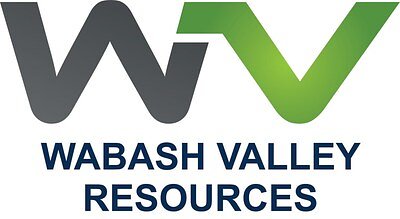
Coal to Clean Ammonia: Indiana Project Tests Limits of 'Clean Coal' Promise
A $2.6 billion project in Indiana aims to produce clean ammonia from coal, sparking debate over the viability and environmental impact of 'clean coal' technology. Will it boost US fertilizer security or perpetuate fossil fuel dependence?
Coal to Clean Ammonia: Indiana Project Tests Limits of ‘Clean Coal’ Promise
West Terre Haute, Indiana – A $2.6 billion project poised to break ground in West Terre Haute is reigniting debate over the future of ‘clean coal’ technology. The facility, spearheaded by Wabash Valley Resources and backed by Korean investment, aims to produce 1.1 million metric tons of clean ammonia annually – a key ingredient in fertilizer – using a novel process that captures a significant portion of the carbon dioxide emissions typically associated with coal. While proponents tout the project as a vital step toward bolstering US fertilizer security and creating hundreds of jobs, critics question the environmental viability of relying on fossil fuels in an era of accelerating climate change.
A Boost for Domestic Fertilizer Production?
The project comes at a critical moment for the US agricultural sector. Global fertilizer prices surged in 2022 following the war in Ukraine, exposing vulnerabilities in the nation’s supply chain. Currently, the US imports roughly 20% of its nitrogen-based fertilizers, relying heavily on foreign sources. The Wabash Valley project promises to reduce that dependence, potentially stabilizing prices for farmers and securing a vital resource.
“This project is about more than just fertilizer,” explains an anonymous source familiar with the project’s financing. “It’s about securing a critical supply chain for American agriculture and creating a pathway to a more sustainable future.”
The Promise and Peril of ‘Clean Coal’
The core of the project lies in a process called oxygen-blown coal gasification, combined with carbon capture technology. Coal is converted into syngas, which is then processed into ammonia. The facility claims it will capture 50-70% of the carbon dioxide produced, preventing it from entering the atmosphere. Captured CO2 will be either stored underground or used in industrial applications.
However, experts caution that even with carbon capture, coal-based ammonia production carries a substantial environmental footprint. “While carbon capture is a step in the right direction, it’s not a silver bullet,” notes an energy analyst who reviewed the project’s environmental impact assessment. “Coal gasification is water-intensive, and even with capture, there will still be significant emissions. Natural gas-based ammonia production generally has a lower carbon intensity.”
The project will consume 3-5 million gallons of water daily, raising concerns about water availability in the region. Furthermore, the process generates solid waste and liquid effluents that require careful management to prevent environmental contamination.
Korean Investment and Strategic Partnerships
The project is bolstered by $500 million in investment from Korean partners, including Hanwha and the Korea Industrial Investment Corporation (KIRA). This investment reflects a strategic interest in securing a stable supply of ammonia for South Korea’s agricultural sector and expanding into the US clean energy market.
“Korea sees this as a win-win,” explains a source with knowledge of the investment deal. “It secures access to a vital resource and provides an opportunity for Korean companies to demonstrate their expertise in clean energy technologies.”
Community Impact and Labor Support
The project is expected to create over 2,000 construction jobs and 250-300 permanent positions once operational, providing a significant economic boost to the West Terre Haute community. Labor unions have expressed strong support, viewing the project as a potential bridge to cleaner energy jobs.
“This project is a lifeline for our community,” says a union representative. “It will create good-paying jobs and provide opportunities for workers to learn new skills.”
Environmental Concerns and Regulatory Hurdles
Despite the economic benefits, the project has drawn criticism from environmental groups who argue that relying on coal, even with carbon capture, is a step in the wrong direction. Concerns remain about the effectiveness of carbon capture technology and the potential for leaks or malfunctions.
“This project is a distraction from the real solution – transitioning to renewable energy sources,” says an environmental advocate. “Investing in coal prolongs our dependence on fossil fuels and undermines our climate goals.”
The project faces several regulatory hurdles, including obtaining permits for air and water quality, as well as demonstrating the long-term effectiveness of its carbon capture system.
A Test Case for Industrial Decarbonization?
The Wabash Valley project is being closely watched by industry experts and policymakers as a potential test case for industrial decarbonization. If successful, it could pave the way for other coal-based facilities to adopt carbon capture technology and reduce their environmental impact. However, critics argue that a truly sustainable future requires a complete transition to renewable energy sources.
“This project is a gamble,” says an energy analyst. “It’s a bet that carbon capture technology can deliver on its promise and that coal can play a role in a low-carbon future. The outcome will have significant implications for the future of energy and the environment.”
The coming years will determine whether the Wabash Valley project can deliver on its promises and whether ‘clean coal’ can truly contribute to a more sustainable future. For now, the project remains a focal point of debate, highlighting the complex challenges and opportunities in the quest for a low-carbon economy.
